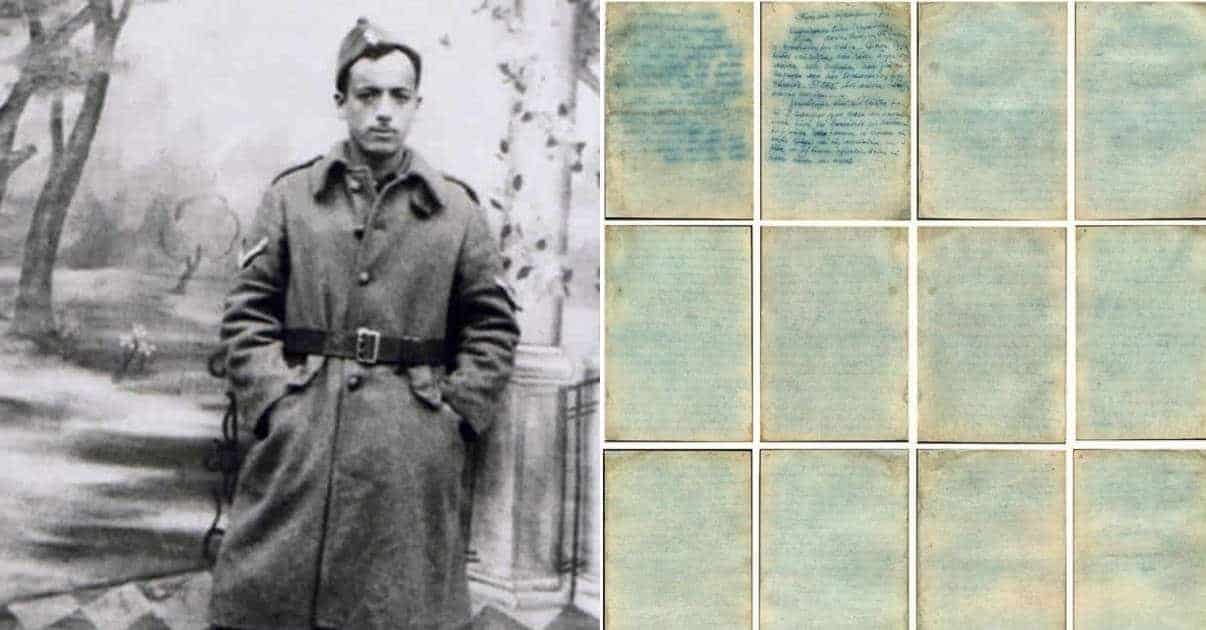In November 1944, Marcel Nadjari, a Greek Jew, secretly scribbled his account of the Nazi atrocities ongoing in the Auschwitz concentration camp. Nadjari worked as one of the Sonderkommando, a group of press-ganged Jewish prisoners forced to clean up the evidence of the victims of the gas chambers. Nadjari believed his death was eventually inevitable- and would only be hastened if his account were discovered by the Nazis. So he sealed the letter in an old flask and buried it near one of the death camp’s crematoria, in the hope that someone would find it after the war.
Thirty-six years passed. Then, a young Polish forestry student excavating in the forest around Auschwitz came across the flask buried 40 cm below the surface. Badly damaged after nearly forty years underground, the letter was initially unreadable- until recently, when Russian historian Pavel Polian and a young associate managed to enhance digitally, and so read Nadjari’s letter. What it letter reveals is a raw and heartfelt account of events in the camp- and the thoughts and feelings of those who witnessed them- and somehow survived.

The Sonderkommando
Jews had lived in the city of Thessaloniki in Greece since the late second century BC. Unlike in many areas of Europe, they were accepted members of the community, living peacefully with their Christian neighbors. In 1940, around 50,000 Jews were living in Thessaloniki. Amongst them was 23-year-old merchant Marcel Nadjari, who lived with his parents and his younger sister, Nelli.
Then, the Second World War broke out. Along with 12,898 other Jewish men, Nadjari joined up to help defend Greece from invasion. The Greek defensive campaign was short-lived, and by April 1941, the fight for Greece was over. For Greece’s Jews, the real horrors of the war now began. In Thessaloniki, in July 1942, after a year of fear and restriction, all the Jewish men between 18-45 were ordered to present themselves in the town square. From there, they were taken to labor camps. On March 15 the following year, the first of nineteen trains left the city, carrying the rest of Thessaloniki’s Jews to Auschwitz and Birkenau.
Marcel Nadjari’s parents and sister were amongst the deportees of 1943. However, Nadjari himself was not shipped out until April 1944. Once at Auschwitz, he found himself recruited into the Sonderkommando, the 2,200 strong body of Jewish prisoners forced to aid the Nazi death squads- or face immediate death themselves. It was the Sonderkommando who had to greet and reassure new prisoners. They collected up the discarded possessions and shorn hair of the new intake -and led them to the gas chambers. They then stripped the bodies of the dead of gold fillings and valuables before cremating them and disposing of the ashes in a nearby river.

Sonderkommando were kept healthy with better rations and living conditions. This advantage meant that they had a chance of staying alive, for even a life amongst the horrors of Auschwitz meant something. However, they also lived with the knowledge that the Nazis could cull them at any moment and replace them with a fresh intake of prisoners. For the Sonderkommando were the bearers of their master’s secrets. When the Sonderkommando of Auschwitz learned of a proposed cull in October 1944, they rebelled; a futile event which was crushed and resulted in the death of 451 of their number. Marcel Nadjari survived because he was not amongst the rebels.
Only 110 of the Auschwitz Sonderkommando are known to have survived the war. Most of these survivors have disappeared from history, for few wished to publicize the horror of their lives in Auschwitz- or what they were forced to do to survive. However, in November 1944, a month after the unsuccessful coup, Marcel Nadjari, risked his own life to pen a thirteen-page letter that was his testimony to the Nazi’s atrocities, which he scribbled down on scraps of paper and buried.

